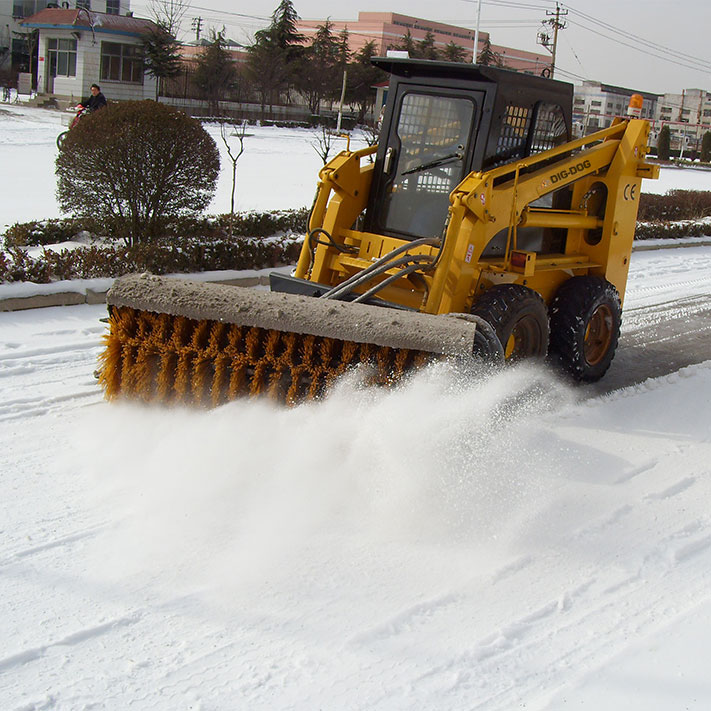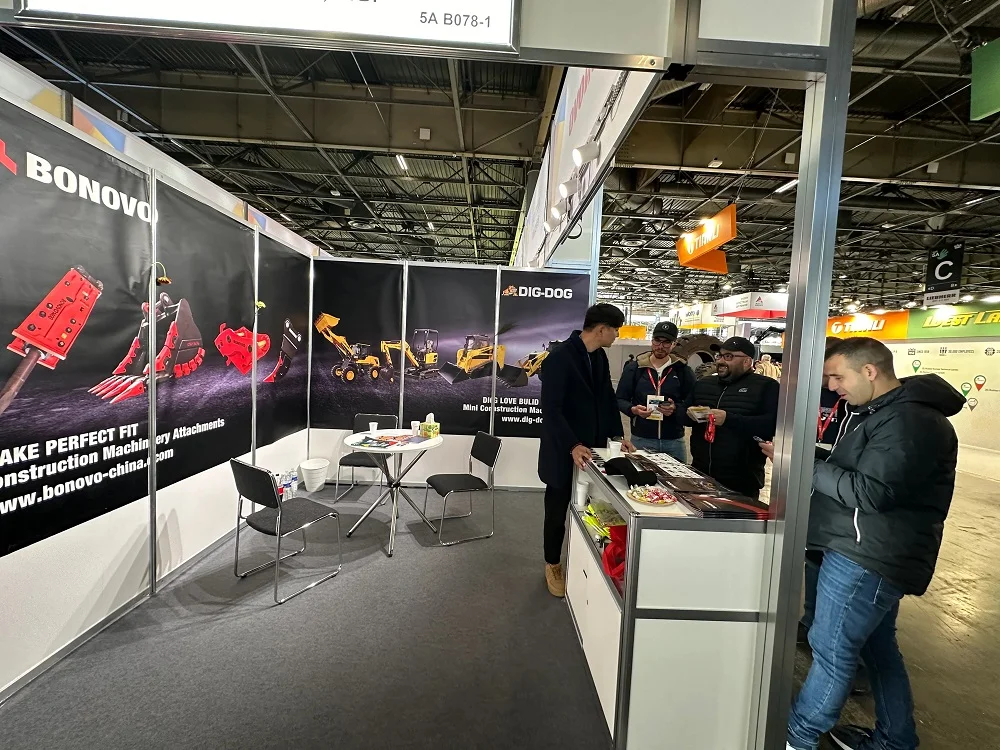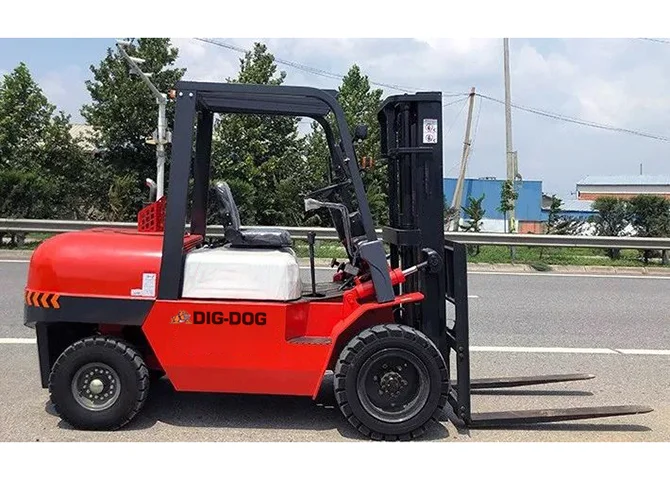No matter your tasks, compact loaders are some of the most useful machinery available to contractors and equipment operators. Though they are all categorized as compact loaders, skid steer loaders, compact track loaders and compact wheel loaders have some significant differences. It’s crucial to understand these differences so you can choose the right option for you.
To determine the right loader for your next project, turn to the experienced and knowledgeable representatives at DIG-DOG. We can help you determine the correct model and whether you should buy or rent your equipment.
Skid steer loaders, compact track loaders and compact wheel loaders all perform similar operations. You can attach dozens of work tools to them, easily converting them into the machinery you need. The main difference between the three types of loaders is how they drive and steer. Skid steers and track loaders operate in a skidding fashion, while wheel loaders steer by independent or articulating action.
Skid steer loaders and compact track loaders are typically smaller in size and fit in tighter locations, while compact wheel loaders are generally slightly larger. The skidding nature of compact track loaders and skid steer loaders gives them a tight turning radius. Compact wheel loaders have a slightly larger turning radius but are typically smoother to operate.
Skid steer loaders are incredibly versatile pieces of machinery. They perform various tasks across a range of industries, from construction to landscaping to forestry and agriculture.
The skid steer gets its name from the way you steer the machine. The right-side wheels drive forward and in reverse by a joystick in the operator’s right hand. On the left side is a joystick that controls the left-side wheels forward and reverse.
With this control arrangement, the operator pushes both joysticks forward to engage both the left- and right-side tires forward and moves the joysticks backward to send all wheels in reverse. If the operator wants to turn left, they pull back on the left joystick while pushing forward on the right stick. These simple controls lead to a skidding movement when the machine turns, hence the name “skid steer.”
Skid steers are well-known for their wide assortment of attachments that connect to the front of the loader. DIG-DOG skid steer attachments range from standard buckets, with or without teeth, augers, brooms and dozens more.
Compact track loaders are similar to skid steer loaders, but with one significant difference — they have tracks instead of wheels. With tracks, compact track loaders have the advantage of greater weight distribution over a larger surface area. Distributing greater weight over a large surface area makes the compact track loader better suited to driving over softer ground, like mud, snow or loose soil, without sinking in.
Compact track loaders usually come with rubber tracks. This material is less abrasive on surfaces that need to be preserved, such as stonework, freshly cured concrete or turf. Similar to skid steer loaders, compact track loaders are universally compatible with DIG-DOG work tools, including brushcutters, stump grinders and trenchers.
Like skid steer loaders, compact wheel loaders have a bucket in front and a wide range of attachments available. The most significant feature that separates compact wheel loaders from skid steer loaders is the articulated steering — wheel loaders typically have a pivot point that facilitates turning. The pivot point means that wheel loaders don’t skid like skid steer loaders but instead drive more like cars or trucks.
Articulated steering generally results in smoother operation, reduced ground disruption and extended tire life. Compact wheel loaders also typically seat the driver higher up and have more visibility around the machine’s sides and back compared to skid steer loaders. Similar to the other loaders, you can outfit your compact wheel loader with a variety of attachments, from forks to rakes to tillers.
Skid steer loaders, compact track loaders and compact wheel loaders all perform similar tasks. They come with the flexibility to equip an extensive range of attachments to perform nearly any job. Some of the applications all three machines perform with ease include:
Though each machine can perform the tasks listed, each is better suited to some than others.
Skid steer loaders are defined by their compact size, small turning radius and workhorse potential. Their small size means they’re ideal for tighter environments, like a residential backyard or narrow construction sites that limit entry and make it hard to turn around and operate safely.
The bucket attachment comes stock with a skid steer. You can use the bucket work tool to scoop up all forms of raw material from dirt to soil, mulch or gravel. Larger objects like boulders and heavy items like construction equipment can also be carried in the bucket to make your job site more efficient. Skid steers also excel at snow removal and other seasonal jobs, making them useful year-round.
Like skid steer loaders, compact track loaders can fit into smaller spaces, making them ideal for residential or construction use. The real value in the compact track loader is in its track maneuverability. The tracks enable the machine to travel on soft ground without the threat of getting stuck.
This is a huge advantage in regions with high precipitation where the ground can get muddy and become inaccessible to wheeled machines. The tracks also give the compact track loader a lower center of gravity and greater traction on sloped surfaces. You’ll often see them easily travel up steep hills, and despite less traction on the incline, they remain totally stable.
The compact track loader can also be equipped with a wide range of attachments. Because of its added stability, it can perform many intensive tasks, like high-impact drilling, with greater competence.
Compact wheel loaders are an essential piece of equipment that many contractors and businesses rely on for material hauling and other tasks. They have an unparalleled ability to move heavy objects or scoop up large amounts of material and transfer them to trucks for transportation.
Compact wheel loaders seat the operator higher up, giving them excellent visibility of their surroundings. This is a major safety asset when operating in high-traffic areas like parking lots or active construction sites.
The compact wheel loader is an extremely efficient machine when it comes to travel speed and bucket capacity. The gearboxes on compact wheel loaders enable them to travel at higher speeds, making them ideal for movement between job sites or transporting materials across longer distances. Their buckets can haul large amounts of materials with each scoop, efficiently loading transport vehicles like dump trucks or pickup trucks.
When it comes to making an investment in a compact wheel loader vs. a compact track loader vs. a skid steer, it’s critical to consider several points. The first is the machine’s initial cost, which varies by model. Factored into the purchase price should be the total life span, including the serviceable life of each machine, and how it compares with its initial cost. Next, you need to consider fuel efficiency and ongoing consumables, like tires.
The price is typically higher for a compact wheel loader vs. a skid steer or compact track loader. Compact wheel loaders have more complicated drivetrain components that allow them to travel faster and with articulated steering. The articulated steering system in compact wheel loaders minimizes wear and tear compared to skid steer and compact track loaders, resulting in a longer service life.
To determine a machine’s real longevity, you need to factor in what the loader is used for and how well the maintenance schedule was adhered to. While compact wheel loaders usually have a slightly higher upfront cost, the extended length of service life can make up for it.
Compared to compact wheel loaders, skid steer loaders and compact track loaders are usually run at higher throttle levels because of the more significant amounts of power required to operate them. The result is lower fuel efficiency compared to compact wheel loaders. Additionally, many compact wheel loaders have a throttle management system that adjusts the throttle to higher levels only when under additional load, further improving fuel economy.
Owners of compact wheel loaders may find they can extend the life of their tires because of the machine’s articulated steering system. They induce less of a skidding motion on their tires, causing less abrasion with the ground and greater tread life. Skid steer loaders and compact track loaders tend to wear down their tires and tracks faster.
Being able to maneuver your loader around your job site easily is critical. The goal with maneuverability is to select the machine that can get the job done most efficiently. Usually, this requires a larger machine with more power. But if a larger machine can’t fit the work site, maneuverability typically trumps power.
Wheel speed is also an important consideration. Consider whether you need a machine to travel short or long distances with each load. Similarly, factor in whether you’d like your compact loader or skid steer to have the capability to travel on public roads.
Skid steer loaders and compact track loaders are typically smaller than compact wheel loaders, making them better suited for small spaces. The skid steering shared by the skid steer and compact track loader makes their turning radius extremely small. Because they can turn on a dime, they’re the preferred loader for tight operations.
Compact wheel loaders are typically faster, giving them a considerable advantage to contractors who want to transport their machines on public roads. Some compact track loaders come with a gearbox allowing speeds up to 25 mph. Skid steers and compact track loaders top out at around 12 mph, making long-distance travel to another site not as appealing.
Visibility is an important consideration when deciding between skid steer loaders, compact track loaders and compact wheel loaders. The environment you’re operating in largely dictates which machine is best.
Skid steer and compact track loaders sit the operator inside the machine, and the primary loader arms run along with the operator cabin. Because of this, the visibility to the sides of the loader is somewhat reduced. The engine in the skid steer and compact track loader is located behind the operator, reducing rear visibility.
Compact wheel loaders sit the operator up higher and have less equipment obstructing the operator’s view. This results in a broader field of vision on all sides of the cabin. The increased visibility for the compact wheel loader means it‘s better suited to operate in areas that require more visibility, such as busy public areas.
Skid steer, compact track and compact wheel loaders all come equipped with backup beepers, alerting nearby people that the machine is active and in reverse, reducing the risk of operating in busier areas. Each machine comes with front view lights and brake lights, similar to a vehicle, helping the operator to see and be seen in dim environments.
Skid steer, compact track and compact wheel loaders usually come equipped with a bucket as their most basic attachment. This is because buckets are used to scoop up and transport materials — one of the primary uses of all loaders. The materials these loaders can pick up range from soft soils and sand to coarse gravel and rocks. Tooth buckets are suited for cutting into tougher or more densely packed materials, such as clay or hardened earth.
Another consideration with a compact or skid steer loader is the amount of power it can output. With greater amounts of power, the loader is capable of hauling heavier material and scooping up tougher material that might be clumped together by tree roots or other debris.
When it comes to power, skid steer loaders and compact track loaders typically have a larger power-to-weight ratio than compact wheel loaders. In some cases, compact skid steers and compact track loaders can have more horsepower than a compact wheel loader of a similar rated capacity. This is due to the larger amount of power required to turn and operate the machines by skid-steering than the wheel loader’s articulated steering system. Compact wheel loaders simply don’t need as much power to perform similar tasks because of their more efficient design for movement.
Compact wheel loaders are usually slightly larger than skid steer and compact track loaders. As a result, their buckets are somewhat bigger as well, which increases their hauling capacity and overall efficiency. The typical limit in bucket size for a skid steer and compact track loader is about 1 cubic yard, while compact wheel loaders can range from 2 1/2 to 3 cubic yards.
The difference in bucket capacity is a serious consideration, as it determines the amount of work a loader can perform per day. If you require a loader to run all day long and remain highly efficient, a compact wheel loader is probably a better alternative for you. If load capacity is not as critical, then a skid steer or compact track loader might be more suitable.
Modern skid steer and compact loaders are designed with operator comfort in mind. Caterpillar knows that operators spend many hours daily in the driver’s seat and wants to make their workday as comfortable as possible.
Many new skid steer and compact loader models come with operator cabin pressurization, which filters the air as it comes in. This means that operators breathe in clean air even if the outside air is extremely dusty or smoky if operating during wildfire season.
Operator position in the machine is another consideration you’ll need to make when deciding which machine is suitable for you. Compact track loaders and skid steer loaders sit the operator lower down in the machine, limiting their field of view, especially to the sides and rear. On the other hand, compact wheel loaders sit the operator up much higher, giving them better visibility to the front, sides and rear.
Compact wheel loaders also tend to operate more smoothly in their turning operation. Their articulated steering systems don’t require the machine to skid on the wheels or tracks like skid steer and compact track loaders do.
When it comes to choosing between a compact loader vs. skid steer, DIG-DOG has a proven track record of supporting our customers to make this important decision. No matter which loader you choose, you’re guaranteed high-quality, powerful construction equipment when you choose a Dig-Dog machine.
 BONOVO Group at INTERMAT 2024 Paris Exhibiton
BONOVO Group at INTERMAT 2024 Paris Exhibiton
 A Ultimate Guide to Clamp Forklifts and Attachments
A Ultimate Guide to Clamp Forklifts and Attachments
 How To Choose The Right Compact Wheel Loader
How To Choose The Right Compact Wheel Loader
 How Much Does a Forklift Weigh?
How Much Does a Forklift Weigh?